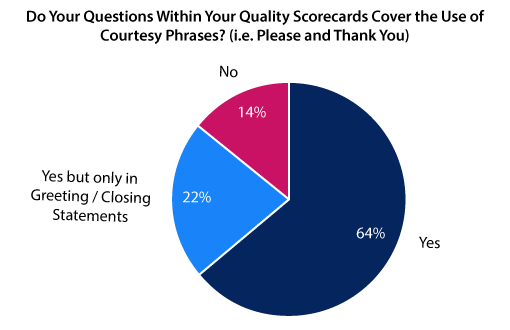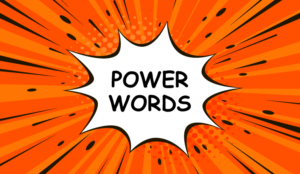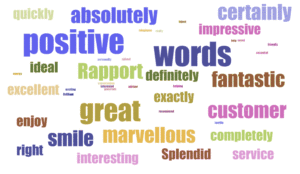We investigate how you can improve the quality of your customer service writing, making it simple, friendly and personal.
How to Simplify Your Customer Service Writing
Here are a few ideas for how you can simplify your writing for your customers.
Shorten Your Sentences
You can always simplify your writing style by shortening your sentences.
In contemporary business writing, a loose rule is to write sentences in the 20 words or less range.
Shorter sentences will make your emails, chats and letters easier to read.
Use “I”, “You” and “We”
Refer to yourself as “I” or the company as “we”. When it comes to the customer, say “you”.
“When you use personal pronouns, you make it clearer to customers who is doing what to solve their problem or address their concern,” says Leslie O’Flahavan, Founder of E-Write.
Examples of statements where personal pronouns are used well include:
- “I will review your account.”
- “We cannot refund your payment, but we can offer you a credit to apply to your next order.”
- “You can check your account history by…”
Using personal pronouns will also make your writing friendlier and more personal!
Where Possible, Write in Active Voice (Not Passive!)
The relationship between the subject and the verb are so clear in active voice that this sentence structure can really help to clarify things for the customer.
An example of a statement written in the passive voice is: “A replacement part will be sent because…”
It sounds much better in the active voice: “We will send you a replacement part because…”
The active sentence is clearer and easier for the customer to understand.
To test whether your customer service writing is being written in an active or passive voice, check out the video below, where Neil Martin – Director at The First Word – shares a quick and easy test.
Remove the Jargon
Write in simple, plain English. Just because acronyms and specialist phrases are freely used in and around your contact centre, don’t assume your customers will know what they mean too.
Even if the customer does know, the chances are that they will have to take a moment to think about it. This goes against our aim of creating content that is easy to read.
One tip here, which many advisors find useful, is to write in their own tone of voice. This can help them to avoid falling into the “jargon trap” and sounding too “corporate”.
Use Bullet Points for Lists
Break up long chunks of information into small paragraphs and bullet points.
To keep the reader’s attention, break up long chunks of information into small paragraphs and bullet points.
Bullet points can be particularly good when explaining next steps.
Just please avoid starting a list halfway through a paragraph and continuing that paragraph with five or six points – separated by commas – in one long sentence.
Get to the Point Quickly
When writing a long response to a customer’s query, think about what pieces of information are going to be most important to them.
It is likely that either the resolution or an apology is what the customer will value most. So start there!
Don’t feel the need to write paragraphs explaining how you came to that resolution or why you feel the need to apologize. The customer will only get frustrated at having to skim through your message to get to the important bits.
How to Make Your Customer Service Writing Friendlier
Having friendly customer service is fundamental. Don’t let the monotony of the work day get ahead of this. Instead, prioritize the following practices.
Start Well and End Well

Gavin Scott
“Think about your book-ends. Give a nice, warm greeting at the beginning and end on a high – by perhaps wishing the customer well and offering further support,” says Gavin Scott, Company Director at Loaf Training.
Starting with a positive greeting – which uses vibrant, positive language – can be a great way to set the tone for the conversation.
Then, once you have set the tone with a quick greeting, jump straight into the important stuff.
Give Compliments
Giving compliments to customers is a great way to be friendly. Just don’t turn it into a box-ticking exercise.
Train advisors to use complimentary words, so that when a customer:
- vents their frustration, the advisor writes: “Thanks for bringing this to my attention.”
- shows that they’ve done their research, the advisor writes: “It’s good to hear that you’ve been so proactive.”
- describes a mistake that they made, the advisor writes: “That’s an interesting idea, I can understand why you did that.”
Using authentic compliments like this, which pick up on the little bits of “gold dust” that customers share in their messages, is a great way to create an emotional connection with them.
Don’t Forget Your Courtesy Words
Don’t overlook the value of saying: “Please”, “Thank you”, “Sorry” and so on. These courtesy words are fundamental to respectful and friendly conversations.
If the advisor fails to use these words where appropriate, it can really damage any rapport which has previously been built.
To ensure that these basic courtesies are being met, most contact centres monitor their usage as part of their quality assurance (QA) programme – as highlighted in the chart below.

This chart shows the results of a question asked to over a hundred call centre professionals during our webinar: 10 Ways Quality Can Improve Contact Centre Performance
For more advice on providing courteous customer service, read our article: The Best Courtesy Words and Phrases to Use in Customer Service
How to Make Your Customer Service Writing More Personal
Personalization is the key to ensuring that the customer feels as though they are receiving great written customer service that goes beyond templated responses.
Here are some great ideas for creating that personalized effect.
Address the Details
Let’s say that the customer mentions that: “We were disappointed that we couldn’t book a second service because the booking form was not working properly.”
In our response, we could note that the customer has used the service before. That shows that they must have enjoyed the experience first time around.
We could note that the customer has used the service before. That shows that they must have enjoyed the experience first time around.
So, acknowledge that and simply mention in your response: “It’s good to know that you wanted to book a second service…”
If you take that small detail and reflect it back, not only does that make your message more personal, but it conveys to the customer that you have closely read their original message – knowing what the customer thinking and reflect that back in the customer writing.
“Mining through the original email, chat or letter to find good details to repeat when we respond can be a really great way to build rapport through your customer service writing,” says Leslie.
For more on building rapport in the contact centre, read our article: 27 Effective Ways to Build Customer Rapport
Use Contractions
Examples of contractions include: “I’m”, “would’ve” and “didn’t”. These are contractions of: “I am”, “would have” and “did not”.
Contractions are more common in speech, so if you use contractions in your customer communication, it will sound a little bit more like speech.
When our writing sounds more like speech, the tone becomes more personal.
Answer the Unasked Questions
Read between the lines. Don’t only answer the question put to you, also think: what are the unasked questions that we can help the customer with?
Once you’ve covered the urgent parts of the query, consider what other advice you could give the customer that they may not have even considered themselves?
This can be a nice surprise for the customer, especially if the advisor can sense that they are uncomfortable or anxious to ask more questions.
Bad Customer Service Writing Mistakes to Avoid
To finish off this article, let’s look at some of the key mistakes to avoid that can hinder your efforts to write simple, friendly and personal customer communications.
These mistakes were shared with us by Leslie O’Flahavan.
Don’t Defend the Mistake
Let’s say that a customer writes in with the message: “I ordered your luxury chocolates online. When they were delivered, they were all crushed.”
Don’t defend a course of action if it didn’t happen.
That’s a problem. But the advisor feels compelled to respond with defensiveness, saying: “We package our chocolates very carefully and go to great lengths to ensure that they arrive in a good condition.”
Don’t defend a course of action if it didn’t happen.
Don’t Wait Until the End of the Email to Provide a Resolution
This is another problem that often stems from the advisor feeling the need to defend themselves or explain themselves before they resolve the problem.
Let’s take our crushed chocolate example from the last point. Don’t immediately talk about your practices in wrapping the chocolates carefully or suggest that it was the fault of the delivery driver – who comes from a third-party company like FedEx or DPD – before you put forward your resolution.
If your resolution is a free coupon for more chocolates, lead with that!
First and foremost the customer wants to know:
- Do you care?
- What will you do to make this right?
Don’t Ignore Your Support Systems

Leslie O’Flahavan
Integrate all of the sources of help you have to offer advisors. Make it easy for advisors to switch between the knowledge base, internal communication channels and other channels etc.
On this last point, allow advisors to receive a chat and respond by email, if they believe that is the right course of action.
Lastly, keep your knowledge-base content easy to use. Make sure it’s written in a way that can be easily copied, pasted and edited within your written communications.
For lots more great advice from Leslie on how to best communicate with customers, check this episode of The Contact Centre Podcast.
The Contact Centre Podcast – Episode 15:
Customer Service Writing: How To Get More From Your Emails And Chats
For more information on this podcast visit Podcast – Customer Service Writing: How to Get More from Your Emails and Chats
For more information on how to improve your customer service writing, read our articles:
- How to Write a Good Customer Service Letter – With Examples
- 10 Best Practices to Improve Live Chat
- 10 Top Tips to Improve Email in the Call Centre
Author: Robyn Coppell
Published On: 10th Feb 2021 - Last modified: 30th Nov 2023
Read more about - Customer Service Strategy, Editor's Picks, Email, Language, Leslie O'Flahavan, Live Chat




































